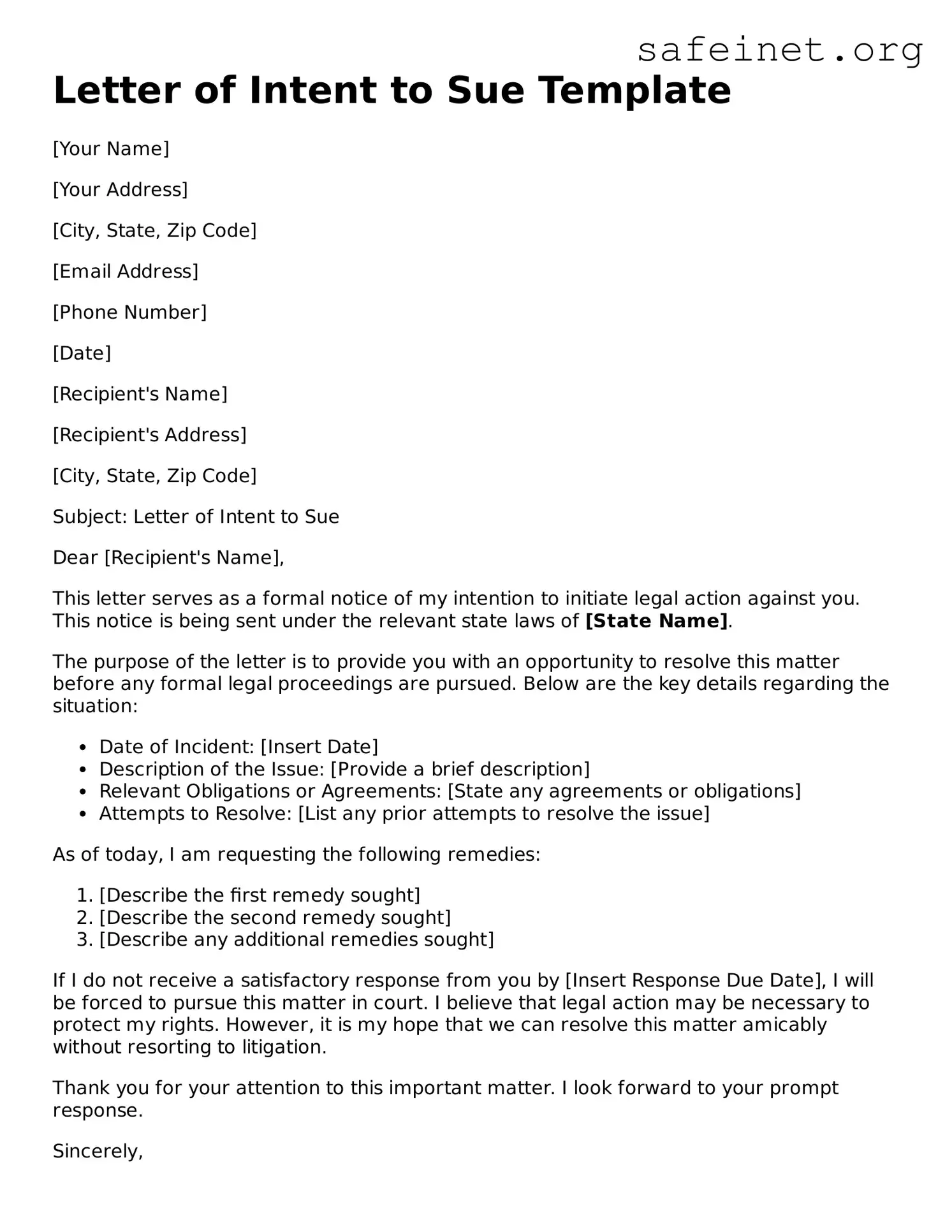What is a Letter of Intent to Sue?
A Letter of Intent to Sue is a formal document that informs another party of your intent to initiate legal action against them. It outlines the reasons for the potential lawsuit, details the issues involved, and indicates that a resolution should be sought. The letter is a strategic step that can encourage negotiations or settlements before proceeding to court.
When should I consider sending a Letter of Intent to Sue?
Consider sending this letter when attempts to resolve a dispute have failed and you believe legal action may be necessary. It serves to give the other party a chance to address the issue and potentially avoid litigation. This letter could be applicable in various situations, such as contract disputes, personal injury claims, or consumer complaints.
What information should be included in the letter?
In the letter, include your contact information, the details of the dispute, any relevant dates, and what you seek as a resolution. You should clearly articulate the reasons you believe you have a valid claim and outline any efforts made to resolve the issue amicably. Additionally, consider setting a timeframe for the other party to respond.
Will sending a Letter of Intent to Sue affect my legal rights?
Sending this letter does not waive your legal rights. It does not constitute a formal lawsuit but serves as a precursor to legal action. However, it indicates your serious intention to seek legal remedies, which may lead to discussions that could strengthen your position if the case proceeds to court.
How do I deliver the Letter of Intent to Sue?
You should deliver the letter in a manner that provides proof of receipt. This can be done through certified mail, return receipt requested, or via email with a read receipt. Using a trusted third-party service for delivery can also be an option to ensure proper documentation of your communication.
Should I consult a lawyer before sending this letter?
It is advisable to consult a lawyer before sending a Letter of Intent to Sue. A legal professional can review your situation, help you properly draft the letter, and ensure that all necessary components are included. Their expertise can also guide you on the best course of action based on your specific circumstances.
What happens if the other party responds to the letter?
If the other party responds, it can lead to a constructive dialogue toward finding a resolution. They may agree to your demands, negotiate terms, or present a counteroffer. It’s important to consider their response carefully and determine if further negotiation is preferred over legal action.
Can I proceed with a lawsuit if I do not receive a response?
Yes, you can proceed with legal action even if you do not receive a response. The Letter of Intent to Sue acts as a formal notification, so if the matter remains unresolved, you have the option to initiate a lawsuit. Keep a copy of the letter and any proof of delivery, as this documentation may be useful in court.
